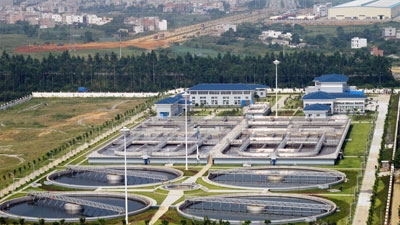Overview
Liuzhou Environment Management Project (2005-2011) supported regulatory reforms of industrial wastewater pollution control and financed priority investments in sewerage networks, wastewater treatment plants, public toilets, a solid waste transfer station and waste collection stations.
As a result, wastewater treatment rate in Liuzhou City was increased from 15 percent in 2005 to over 75 percent in 2011. The water quality in the downstream of Liujiang River was maintained at Class III, guaranteeing the safety of the city’s main water source.
The 1.2 million residents in Liuzhou City, as well as those in the towns and counties at the downstream of the Liujiang River, benefited from improved river water quality and environment. They also benefited from easier access to public toilets, and more efficient solid waste collection and disposal through community collection stations and a new solid waste transfer station.
Challenges
The city of Liuzhou, with about 1.2 million urban residents and more than 1,000 industrial enterprises, is the largest industrial center in China’s western Guangxi Zhuang Autonomous Region. In recent years, the environmental condition of Liuzhou deteriorated as a result of fast industrialization combined with rapid urbanization. The Liujiang River, the main water source for industrial, commercial and domestic use, suffered from pollution from untreated sewage and rainwater flows.
The shortage of well-maintained and reasonable distributed public toilets is another urgent municipal sanitary problem, which hinders the city’s modern development. In addition, there is a need to build more solid waste collection stations and transfer stations in the newly-developed residential blocks, and to purchase multi-function vehicles to collect and transport solid wastes.
Approach
The objective of the project was to improve environmental conditions in Liuzhou by improving wastewater treatment, industrial pollution control, municipal sanitation and solid waste services and management. The approaches taken include: developing autonomous public utilities and helping develop their institutional structures; introducing regulations and reforms of industrial wastewater pollution control; and investing in sewer networks, wastewater treatment plants, public toilets, one solid waste transfer station and waste collection stations.
Results
The project achieved the following results:
- Four wastewater treatment plants with associated pumping stations and sewer networks were built, increasing the total wastewater treatment capacity in Liuzhou City to 500,000m3/day. Today over 75 percent of wastewater discharge is treated, which has helped maintain water quality at Class III in the downstream areas of the Liujiang River.
- The first phase of the rehabilitation of Zhu’exi Creek, a tributary of the Liujiang River, was completed. Wastewater discharged into the creek is intercepted and conveyed to a treatment plant; flood control capacity of the creek was improved; and in particular, the landscaping works changed the surroundings along the creek.
- 42 public toilets and 30 portable toilets were constructed or installed with better maintenance.
- A 450t/day solid waste transfer station was constructed. Once it is operating at full capacity, it will process about 50 percent of the solid waste generated in Liuzhou City, including in the new development zones.
- A comprehensive industrial pollution control action plan was implemented. Eight of the top 11 industrial polluters were forced to build dedicated wastewater treatment facilities. One of the heavy metal dischargers was shut down while the other six met the discharge standards.
- The Discharge Permit System is being executed. The system had issued more than 120 permits by 2011.
- The establishment of Liuzhou Municipal Wastewater Treatment Co., Ltd (LMWTC) was an important milestone of the utility sector policy reform. LMWTC took over wastewater management from the government. It owns all the assets and has the right to collect sewage tariffs from customers and users of self-supplied water directly.
- The Liuzhou Environment Protection Bureau’s capacity was strengthened. It is now equipped with high-tech, on-line monitoring instruments and is executing the discharge permit and licensing system.
- Since 2009, Liuzhou was awarded “China Habitat Environment Prize” and named the “National Garden City” and one of the “China’s Energy Saving and Emission Reduction 20 Top Cities”.
Bank Contribution
The Bank provided an IBRD loan of US$100 million, combined with international knowledge and experience in environment, social, procurement, water and sanitation, and financial management.
Toward the Future
Supported by an IBRD loan of US$150 million, the Liuzhou Environmental Management Project Phase II was launched in 2011 to expand the environment management activities in four counties, two districts, and core urban area of Liuzhou. The new project aims to increase wastewater collection and treatment rate to 85 percent in the greater core urban area and will introduce wastewater treatment to less developed counties. In addition, the project will support capacity building in managing urban environmental infrastructure assets and linking infrastructure investments to a broader environmental protection agenda via innovative urban planning and asset management tools. It also seeks to introduce innovation and international best practice through the co-combustion of sludge in cement producing kilns.

